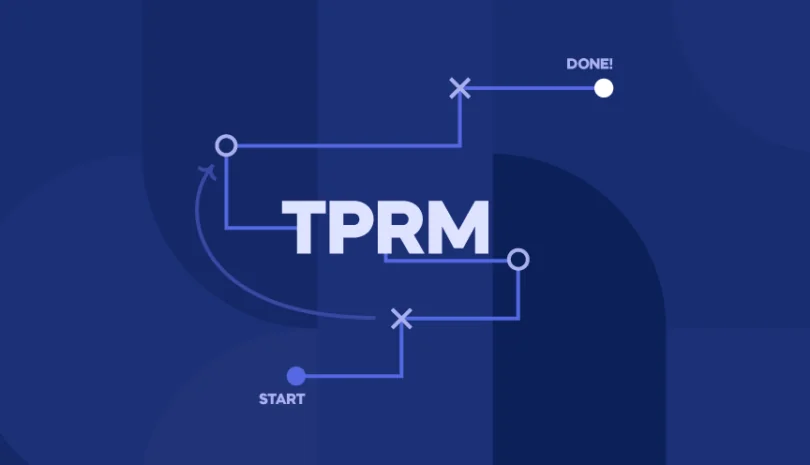If you operate in one of the 15 sectors covered by the EU’s NIS2 Directive, then this framework is probably at the top of your list of important regulations. The updated directive aims to strengthen cybersecurity across critical infrastructure and services within the EU, with a view to improving overall resilience for the region.
NIS2 comes to enhance and update the previous EU NIS cybersecurity directive, extending it to more sectors, introducing a number of new requirements, and reinforcing existing ones. It casts a particularly sharp eye over third-party risk management (TPRM). Organizations are now required to evaluate and verify their third parties’ security practices, use risk levels to determine third-party access permissions and ensure supply chain resilience, among other measures.
The new directive came into effect in January 2023 and gained the full force of law from October 2024. For companies affected by NIS2, that force is awesome indeed. The new directive raises penalties for non-compliance and strengthens supervisory measures to ensure that nothing goes overlooked.
This makes it vital to adapt your TPRM strategies to align with NIS2 requirements, and we’re here to help. In this article, we’ll explain the NIS2 directive, and share the TPRM steps, tools, and best practices required for NIS2 compliance.
What is NIS2 and Why is It Important?
Back in 2016, the EU introduced the first NIS Directive to protect essential infrastructure and ensure cooperation across member states. Over time, however, the cybersecurity landscape evolved. Additionally, different member states understood and enforced the NIS Directive in different ways, making compliance uneven. The authorities felt that critical infrastructure was dangerously exposed to cyber-related disruptions, and it was necessary to update the directive.
NIS2 aims to improve resilience while standardizing enforcement and compliance across the EU. To that end, it covers eight more sectors, totaling 15 sectors that include energy; transport; health; finance; water; digital infrastructure such as data centers, telecommunications, and cloud services; public administration; food supply; manufacturing; and waste management.
The updated directive also introduces a new focus on third-party risk management, supply chain security, and incident response, with an emphasis on securing the supply chain and ensuring vendor compliance. It applies stricter reporting obligations with a fixed definition of serious incidents, increases penalties for non-compliance to a maximum of €10 million, and standardizes enforcement rather than leaving it to member states. All in all, NIS2 is weighty and extensive, and non-compliance has serious consequences.
Key NIS2 Compliance Related to Third-Party Risk Management
Third-party risk stands at the heart of the new directive, making TPRM crucial for NIS2 compliance as well as for your own peace of mind. To meet NIS2 requirements, you need to conduct thorough risk assessments for all your vendors, throughout the supply chain. This involves considering each vendor’s policies and incident history, identifying potential vulnerabilities, and evaluating the cybersecurity risk that they pose to your organization.
NIS2 compliance obligates you to report and respond to serious incidents anywhere in your supply chain within a specific timeframe, which means you need robust mechanisms for incident reporting and response planning that include your third parties. Effective communication and continuous monitoring are vital to keep you informed about issues and equip you to address them as quickly as possible.
Compliance monitoring is another key pillar for compliance because you have to regularly confirm that your third parties adhere to the mandated cybersecurity standards. That requires a system for ongoing assessments and regular audits and reviews of third-party security practices so that you know if they align with NIS2, and can quickly close any gaps that arise.
Last but not least, NIS2 imposes strict documentation and audit requirements. You have to maintain comprehensive records of your TPRM activities, including risk assessments, compliance evaluations, incident reports, and response plans so that you can demonstrate NIS2 compliance when your organization is audited.
Steps to Achieve NIS2 Compliance for TPRM
With such stringent requirements, NIS2 compliance can seem like a daunting task. It’s true that it can be challenging to gain visibility into your supply chain and verify cybersecurity for third parties, but when you break it down into discrete steps, it all becomes achievable. These include:
- Carrying out a thorough vendor risk assessment
- Developing and implementing a robust compliance strategy
- Establishing continuous monitoring and incident response
- Setting up a training and awareness program for your third parties
Let’s take a closer look at what’s involved with each step.
Conduct a Vendor Risk Assessment
The first step towards NIS2 compliance is to set up rigorous processes for evaluating third-party risk. You need comprehensive security questionnaires, together with a system for reviewing vendor security policies and incident history. You might add on-site audits and interviews with stakeholders, to give you a complete understanding of their compliance and security posture.
Once you have all the information, you need to analyze it and combine it with security ratings. This data gives you the basis you need to produce comprehensive risk scores that categorize your vendors according to their risk level, access to sensitive data, and the criticality of the services they provide.
Develop and Implement a Compliance Strategy
Once you know the risk posture for your vendors and contractors, you can formulate a coherent strategy that ensures NIS2 compliance through your supply chain. This involves developing specific policies and procedures that align with NIS2 requirements, such as access controls, encryption, MFA, and reporting obligations.
Once you’ve created your compliance strategy, you need to share it with your third parties. Incorporate your policies and procedures into your third-party contracts and agreements, including detailed clauses about the security measures that they need to take and the consequences for non-compliance.
Continuous Monitoring and Incident Response
Next, you need to monitor your supply chain for emerging threats, so you can detect potential risks early and deal with them before they escalate. This requires implementing continuous monitoring tools that can constantly check your third parties for anomalies or suspicious activities.
Even with all your strategies and policies, it’s impossible to prevent any incident from occurring. That’s why you also need robust incident response plans that include your third parties so that you can coordinate effectively to quickly address and resolve issues as soon as they emerge.
Training and Awareness Programs
Finally, you need to set up training and awareness programs, both for your own employees and for your third-party vendors. It’s important that all your internal teams know about the importance of NIS2 compliance and what’s involved in achieving it, as well as receiving training in security best practices to protect your systems and data.
Don’t keep valuable training programs to yourself. Roll them out to stakeholders throughout your supply chain, so that you can feel confident that all your third parties’ employees are on the same page as your own employees.
Challenges in Aligning TPRM with NIS2 Compliance
There’s no denying that the NIS2 Directive is a serious issue. You’ll face many obstacles that make compliance harder to achieve. For a start, it’s always tricky to manage risk for third parties, who have varying approaches to security. Extensive supply chains include vendors in multiple geographies and industries which have their own compliance obligations, making it all more complex.
Additionally, you need to balance NIS2 compliance with existing data privacy regulations like GDPR. That means you need to consider NIS2’s cybersecurity mandates at the same time as vetting third-party data protection, adding to the compliance burden. Depending on which regions and industries you cover, you might also need to adhere to other standards and regulations, such as DORA, CCPA, and HIPAA.
It doesn’t help that there’s little standardization across your third parties. Every vendor is at a different level of cybersecurity maturity and has its own set of security practices, so you need to navigate between inconsistent attitudes toward risk management and compliance. As a result, you’ll usually need to adjust your assessment and monitoring processes according to each vendor’s security posture.
Best Practices for NIS2 Compliance in TPRM
The precise approach that you take to TPRM for NIS2 compliance will depend on your organization’s risk exposure and the risk posture of each of your third parties. That said, there are certain best practices that you can take that will help you achieve compliance, regardless of your specific vertical or risk landscape.
These include:
- Taking a zero-trust approach to vendor access
- Leveraging tech to monitor and manage compliance
- Conducting regular audits and compliance reviews
- Collaborating with vendors on security and compliance goals
Implementing a Zero Trust Model
A zero trust model, based on the principle of “never trust, always verify,” means that no entity is trusted by default, whether inside or outside your organization. In practical terms, it means that every user has to verify their identity, device, and their request to access specific data or networks, without exceptions.
A zero-trust model helps prevent privilege creep and reduce the risk of unauthorized access to sensitive data or critical business networks. It allows you to enforce granular security policies and strict access controls and creates a clear audit trail of access logs, aligning well with NIS2 compliance requirements.
Leveraging Technology for Compliance
Given that your supply chains are long and complex and the NIS2 Directive is demanding, you can’t manage compliance through manual processes. You need to adopt advanced technologies, particularly automated tools and AI-powered analytics.
Automated risk assessment tools, SIEM systems, and continuous monitoring platforms streamline the process of monitoring and auditing third-party risks and speed up compliance reporting and incident response. Meanwhile, AI and machine learning (ML) platforms can enhance threat detection and automate mitigation actions, so that you can identify and address suspicious activity before it escalates into a serious breach.
Regular Audits and Compliance Reviews
As much as you might trust your vendors to adhere to NIS2 compliance requirements, you still need to keep a watchful eye on your supply chain. It’s vital to carry out audits and compliance reviews on a regular basis so that you can ensure that your vendors remain aligned with evolving NIS2 standards.
Your audits and reviews should be comprehensive and frequent. Make sure that you check all aspects of your vendors’ security measures, including their incident response capabilities, reporting mechanisms, and overall risk management processes. Follow up on any gaps you identify to make sure they are addressed.
Collaboration with Vendors
When you build strong, cooperative relationships with your third parties, you’ll be better able to verify that they understand and are aligned with your cybersecurity expectations. Turning your vendors into partners working towards a shared goal helps create a culture of NIS2 compliance that bolsters your overall resilience.
Deep vendor collaboration means sharing threat intelligence, setting an example of transparency, establishing smooth communication channels, and investing in third-party cybersecurity. You might provide your vendors with training sessions, access to security tools, and ongoing support, to help them implement NIS2-compliant measures.
NIS2 Compliance Solutions for Third-Party Risk Management
The EU’s NIS2 Directive is a serious set of regulations with heavy penalties for non-compliance. Adhering to its requirements around cybersecurity measures, third-party risk management, reporting obligations, and supply chain security can be challenging, especially when your supply chain is extensive and visibility can be poor.
With so much at stake, if you fail to meet NIS2 objectives, it’s vital to integrate proactive third-party risk management into your wider cybersecurity strategies. Without rigorous risk assessment, clear contractual obligations, and ongoing monitoring, you’ll struggle to keep on top of changing third-party risks and emerging threats. You want to know about issues as soon as they arise so that you can address them before they escalate, not after they develop into a serious incident.
The NIS2 Directive became a matter of national law in October 2024, and compliance is now non-negotiable. Failing to do so carries severe consequences, so it’s wise to keep a careful eye on your TPRM policies. Make sure that you regularly review and update your third-party risk frameworks, and check that your tools, processes, and procedures are robust enough to meet NIS2 requirements.
Ready to update your TPRM for NIS2 compliance? Contact Panorays to learn more.
NIS2 Compliance for Third-Party Risk Management FAQs
-
The NIS2 Directive aims to protect critical infrastructure and services from potential breaches that could compromise the entire ecosystem’s security. Now that extensive supply chains are a favorite target for cyber attacks, third-party risk management is vital to address the vulnerabilities and security risks that arise from the supply chain and external vendors.
-
The main NIS2 compliance requirements for vendor management include:
- Risk assessment and management. Conducting thorough risk assessments of vendors and establishing ongoing risk management policies
- Incident reporting. Ensuring that vendors promptly report cybersecurity incidents
- Documentation and audits. Maintaining detailed records of vendor assessments and clear logs for NIS2 compliance audits.
- Enhanced supply chain security. Enforcing strict access controls, strong encryption, multi-factor authentication, and robust network security across the supply chain.
-
Yes, your vendors are responsible for complying with the NIS2 Directive for their own needs. However, the regulations also obligate you to enforce compliance throughout your supply chain. If one of your vendors doesn’t meet the requirements, you could have to pay the penalties alongside them.
-
Yes, there are lots of companies that offer consulting services to help organizations achieve NIS2 compliance. They generally have expertise and experience in cybersecurity risk management, third-party risk management, compliance assessment, and the implementation of NIS2 requirements.



